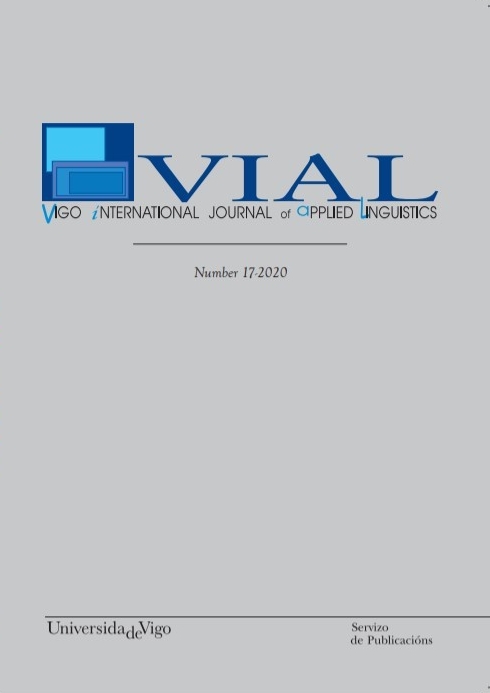On the translation of boundary-crossing events: Evidence from an experiment with German and Spanish translation students
DOI:
https://doi.org/10.35869/vial.v0i17.1466Schlagworte:
Motion events, boundary-crossing, Manner, Thinking-for-translating, translation studentsAbstract
This paper deals with the translation of motion events between typologically similar and different languages, a research field which has been generally approached from the Thinking-for-translating hypothesis. Here we present a student-based experiment focused on the translation of boundary-crossing events (specifically: ‘manner verb + into + a bounded space’) from English (a satellite-framed language) into German (a satellite-framed language) and Spanish (a verb-framed language). The aim is to investigate whether translation students interpret correctly and translate both the boundary-crossing and the Manner information. For this purpose, a group of German and Spanish translation students were asked to translate a series of excerpts from English narrative texts into their respective mother tongues. The results suggest that the way translation students deal with these phenomena is mainly influenced by the lexicalization patterns of their mother tongues, but the nature of the event itself and the context also seem to be key in some cases.
Downloads
Downloads
Veröffentlicht
Ausgabe
Rubrik
Lizenz
Revistas_UVigo es el portal de publicación en acceso abierto de las revistas de la Universidade de Vigo. La puesta a disposición y comunicación pública de las obras en el portal se efectúa bajo licencias Creative Commons (CC).
Para cuestiones de responsabilidades, propiedad intelectual y protección de datos consulte el aviso legal de la Universidade de Vigo.



